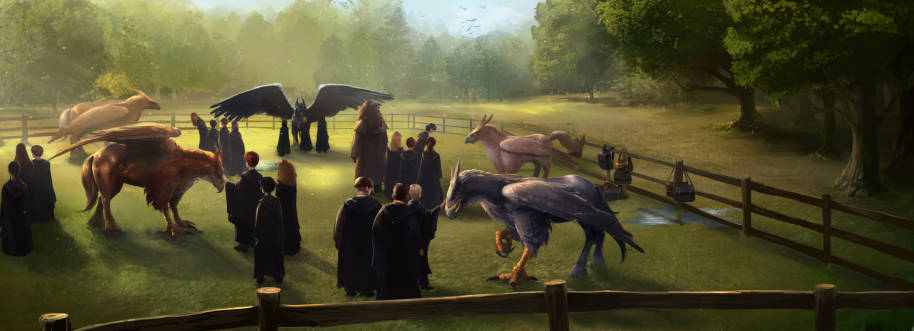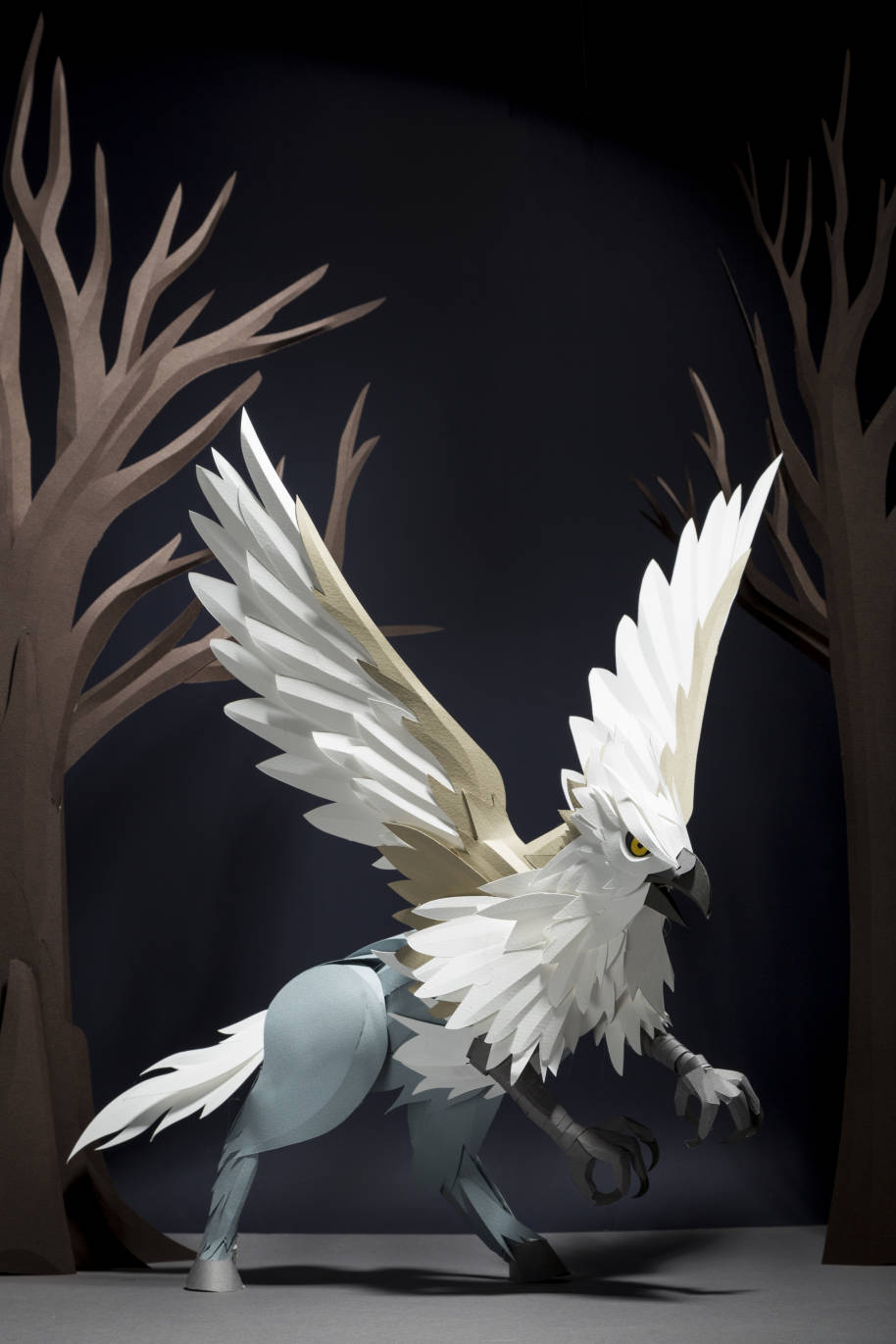
When Dumbledore announces Hagrid as Hogwarts’ new Care of Magical Creatures teacher, it’s fair to say there is a little trepidation after the initial excitement. And really, when you look at some of the creatures Hagrid has introduced before (Norbert the dragon, Fluffy the three-headed dog, Aragog the monstrously gigantic spider), you can see why.
So it’s something of a relief when Hagrid brings a herd of beautiful, regal Hippogriffs to his first class. They might look unusual, but at least they’re not breathing fire or attempting to eat people. Which is not to say you should underestimate a Hippogriff – quite the reverse. If Draco Malfoy had listened to Hagrid or read our guide below, perhaps he’d have avoided that injury he so enjoyed milking.
What is a Hippogriff?
Hippogriffs are half horse, half eagle. These legendary creatures were first mentioned by the ancient Latin poet Virgil and have subsequently appeared in numerous stories, poems and works of art. They are similar to another mythical creature, the griffin. Griffins have the hind quarters of a lion rather than a horse, but griffins and Hippogriffs both have the front features of an eagle, including a beak, talons and wings – just like the Hippogriff herd at Hogwarts.
What do Hippogriffs look like?
Most artistic representations of Hippogriffs show a creature with the colouring of a giant eagle – large white-tipped wings and a curved yellow beak. The Hippogriffs of Hogwarts are more varied. They all have different coloured coats, including stormy grey, chestnut brown and a pinkish roan. Buckbeak, the Hippogriff that allows Harry to fly on his back and injures Malfoy, also has large, piercing orange eyes and a great, sharp head.

How do Hippogriffs behave?
By nature, the Hippogriffs of the wizarding world are very proud. They will react quickly and decisively to anyone foolish enough to insult them – hello, Draco – and they respond favourably to those with good manners. They are loyal to those that gain their trust, but they are well able to look after themselves and definitely not reliant on humans. Newt Scamander’s Fantastic Beasts and Where To Find Them textbook states that taming a Hippogriff should only be attempted by an expert.
How do you approach a Hippogriff?
Given their intensely proud nature, when meeting a Hippogriff it is customary to wait for them to make the first move. Eye contact should be maintained. You should always bow to a Hippogriff – it shows that you are well-intentioned – and wait for them to reciprocate. If they don’t return your greeting, make a quick retreat. If they bow back you can go closer, and if a Hippogriff accepts your approach they might even allow you to climb aboard and take a flight into the skies.
What does a Hippogriff eat?
Newt Scamander – whose mother was a breeder of fancy Hippogriffs – tells us that Hippogriffs burrow for insects, and they will also eat birds and small mammals. Buckbeak seems to have a particular relish for foods so rare they ooze blood, which is lovely.

Where do Hippogriffs live?
Hippogriffs are native to Europe, and the Hogwarts herd live in the Forbidden Forest. When they are breeding, Newt explains in Fantastic Beasts, a Hippogriff will build a nest on the ground and lay a single large egg, which hatches within 24 hours. Hippogriffs can usually fly within a week of birth, but it takes many months before they are able to travel great distances. In the wizarding world, those who keep Hippogriffs in their own homes are bound by wizarding law to perform a Disillusionment Charm on their pets to prevent Muggles from noticing.
Hippogriffs in history and culture
They were supposedly a symbol of the Greek god Apollo, and the word Hippogriff comes from the Ancient Greek word for horse, ‘hippos’, and the Italian ‘grifo’, which means griffin, that other mythical half-eagle creature. According to legend, Hippogriffs are created when a griffin mates with a horse, hence the name.
The Italian poet Ludovico Ariosto wrote about a Hippogriff in his 1516 epic Orlando Furioso. His Hippogriff flies around the world and helps one of the poem’s heroes, Ruggiero, rescue the pagan princess Angelica.
The word ‘Hippogriff’ was adopted into English in the 1600s. Often shown on heraldic coats of arms, in the 19th century Hippogriffs became a regular subject of visual art, appearing in works by the prolific French artist Gustave Doré. More recently Hippogriffs have appeared in books by E Nesbit and the fantasy role-playing game Dungeons & Dragons. And, of course, Harry Potter and the Prisoner of Azkaban.
Want to join the Wizarding World Book Club? Sign up here to read along, gain awards and discover new content every week. You can also join the conversation over on Twitter.

